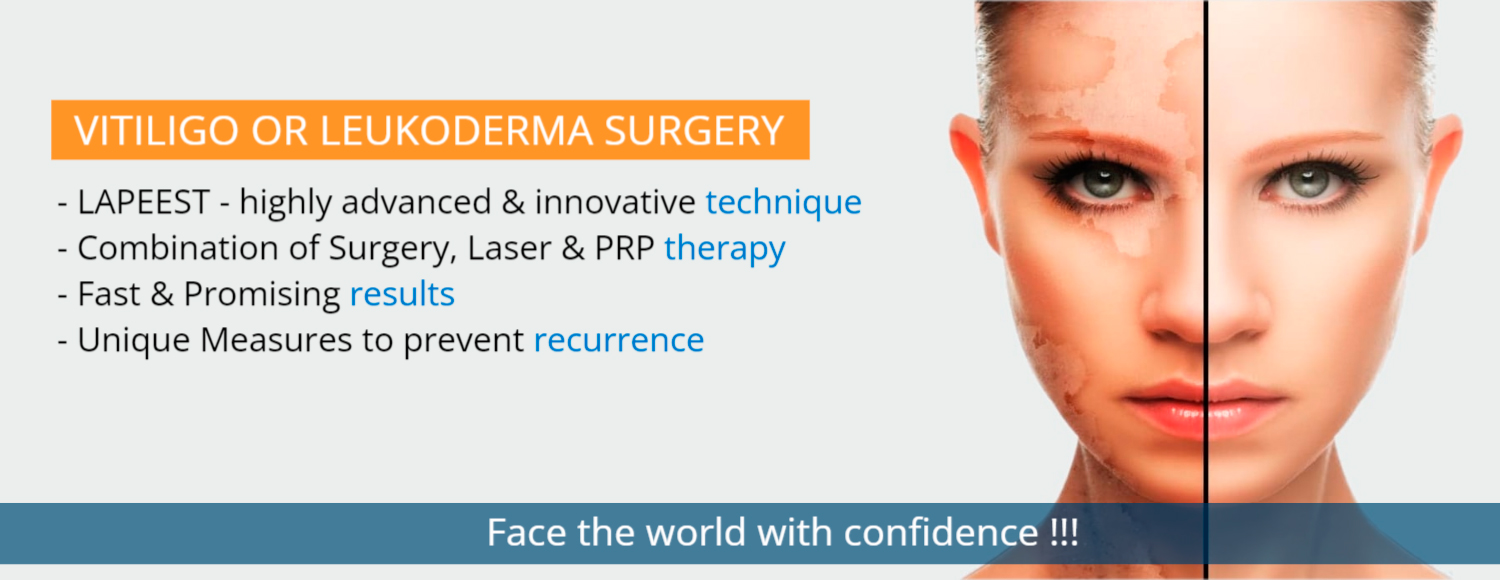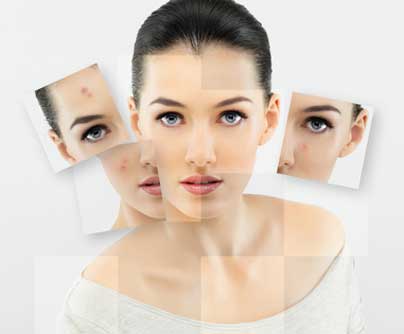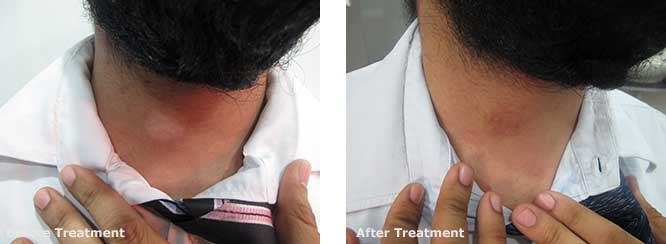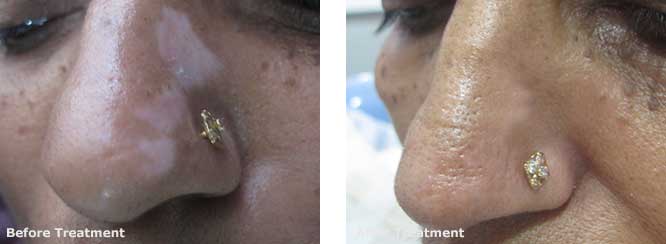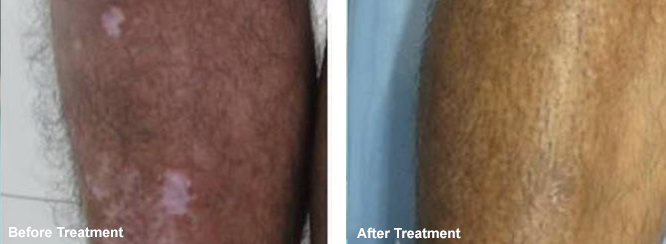Vitiligo or Leukoderma is a problem in which white marks and patches having irregular shape appear on various areas of your skin.
This disorder occurs when melanocytes (cells which produce melanin pigment responsible for giving color to your skin) are destroyed or stop functioning.
It is the most common depigmenting disorder that affects approximately 0.5 to 1% of the general population regardless of race and sex.
The exact etiology of vitiligo is still unknown and it is associated with autoimmune, neural, genetic, oxidative stress, or viral causes. Vitiligo can start at any age, but usually makes its first appearance between 10-30 years of age. It can be generalized (white patches all over the body), segmental (white patches only on one side of the body) and focal (white patches limited to only one or a few areas of the body).
This condition may be psychologically devastating due to the stigma attached to it. And as vitiligo affects more commonly the younger population, it can affect their self esteem creating problems in matrimonial alliance and other social interactions.
Treatment
The aim of any treatment remains
- To stop or slow the progression of pigment loss and,
- Bring back the natural skin color to abnormal white patches
Various treatments (Medical, Light based and Surgical) have been tried for Vitiligo; but there always remain a challenge to achieve the desired results in vitiligo patients.
Medical treatment is given primarily to stabilize the fast spreading vitiligo patches, as the results obtained for repigmentation of existing patches with medical treatment are unreliable and non-satisfactory.
Light based treatments are also found to be not very effective when used alone; thus these are being used only as a supplementation to the surgical treatment. Most of the Light based UV therapies expose both the affected and healthy skin while UVB laser targets only the affected areas, which minimizes the risk of injury to the surrounding healthy areas and significantly reduces recovery times. We, at Aura have UVB laser which produces short pulses of 295 – 350 nm light, that has been demonstrated to treat white patches.
Surgical options available for vitiligo treatment are suction blister grafting / punch grafting, cultured melanocyte suspension transplant and non-cultured melanocyte suspension transplant.
We at Aura Skin Institute, have devised an innovative surgical technique called LA-PEEST (Laser Assisted, PRP Enriched Epidermal Suspension Transplant) which is the new hope for stable vitiligo patients who have cosmetically disfiguring patches over exposed parts. This is a very new surgical technique which makes use of high fluence ablative laser for denuding vitiligo patches and then covering them with patients’ own normal skin tissue of much smaller size admixed in suspension of platelet rich plasma (PRP). PRP is nothing but one’s own blood which is concentrated by special techniques and contains millions of growth factors in very high concentration. It helps in faster healing and also initiates a cascade of signals for restoration of normal pigmentation. LA-PEEST helps in attaining faster repigmentation matching the normal skin as early as 2 to 3 months without leaving any scars or tell-tale signs of surgery. This surgical technique LA-PEEST for the treatment of vitiligo is being widely acclaimed and was selected as an ‘AWARD PAPER’ in the prestigious conference ‘World Congress of Cosmetic Surgery 2017’ held at Bangalore, INDIA from 4th – 6th May, 2017.
Procedure
The procedure is done under local anaesthesia. In this procedure,
-
First a very thin layer of the skin from the healthy donor area of body (usually lateral side of upper thigh) is taken using a dermatome or grafting knife. The dermo-epidermal layer of this skin containing melanocytes is processed in trypsin solution in an incubator. In the meantime, PRP is prepared by drawing 10ml of venous blood from the patient. After this, a the trypsinized epidermal fragments are admixed with platelet rich plasma and a suspension is prepared.
-
Then the area of white patch to be treated is denuded with the use of Er:YAG laser.
-
Finally the PRP enriched epidermal suspension is transplanted over this denuded, depigmented site and covered with a special dressing which is removed after 14 days.
The pigmentation starts appearing within 2 weeks of the surgery and significant results are noticed in 2-3 months time.


